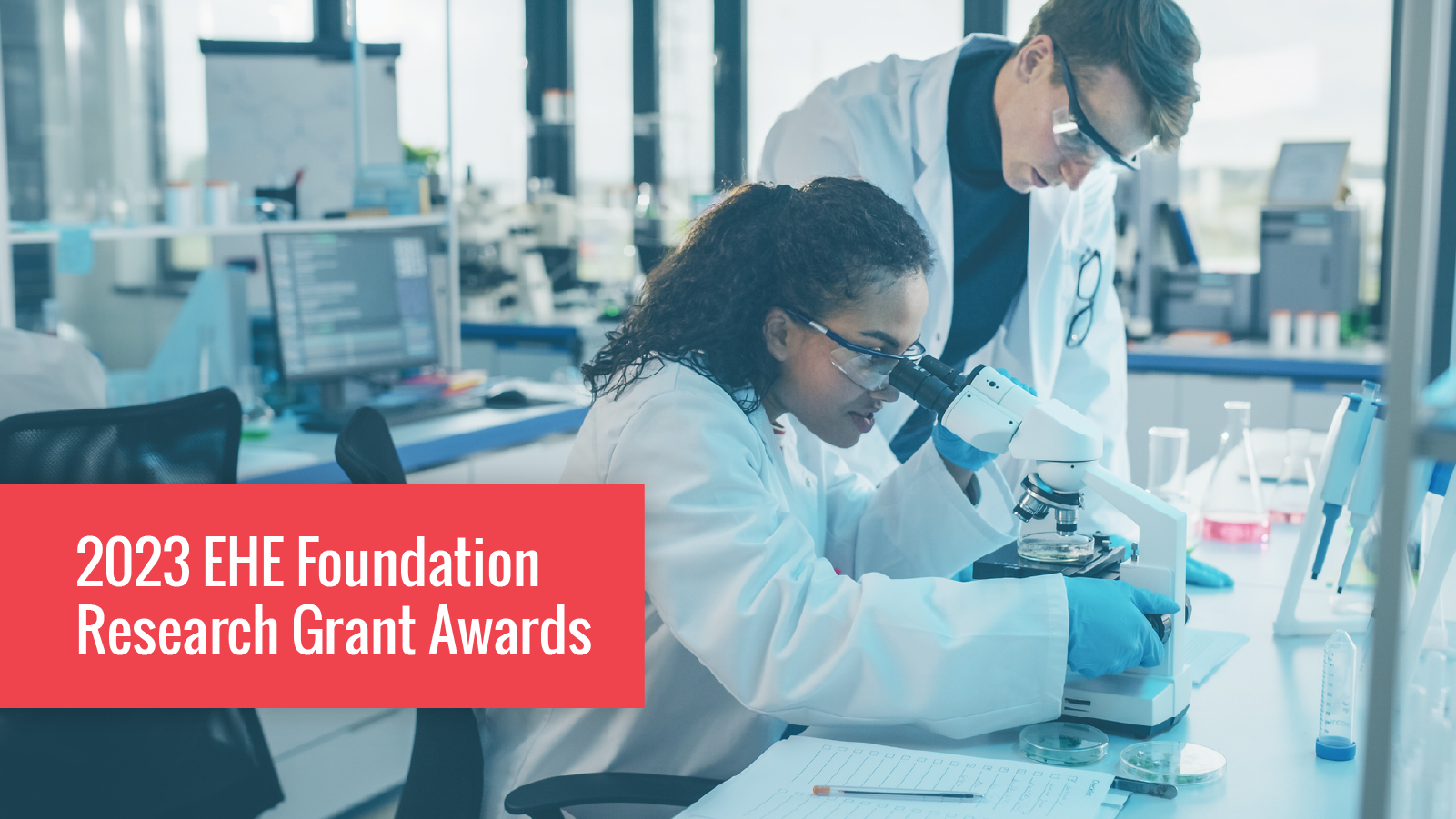The EHE Foundation awards research grants to advance our mission to find treatments and a cure for EHE. With the guidance of our Research Committee, Advisory Board, and expert reviewers, we are pleased to announce the research grants awarded in 2023:
Ajaybabu Pobbati, PhD, Cleveland Clinic Lerner Research Institute
Harnessing FDA-approved drugs to gain mechanistic insight into the regulation of the TAZ-CAMTA1 fusion protein
This proposed research builds upon data generated from the grant awarded to Dr. Pobbati in 2022, entitled Repurposing an FDA-approved Drug for EHE Treatment. The project aims to further investigate and understand the potential to regulate TAZ-CAMTA1 (TC) using FDA-approved drugs.
Project Abstract:
Epithelioid hemangioendothelioma (EHE) is caused by an unusual chromosomal rearrangement that causes the abnormal joining of two genes, generating the cancer-causing TAZ(WWTR1)-CAMTA1 (TC) fusion gene, which is the defining feature of EHE. TC is predominantly found in the nucleus, and its nuclear location plays a key role in causing EHE. We performed a screen on EHE cells grown in dishes, using ~4000 compounds that included ~2000 FDA-approved drugs to identify those that regulate the location of TC within the cell and those that cause it to be unstable. We identified drugs that could drive TC out of the nucleus and ultimately destabilize it, causing it to degrade and disappear, and in this grant, we proposed experiments that will help provide a molecular understanding of this phenomenon. One of the potent drugs uncovered in our pilot study is FDA-approved and has already been shown to have a good safety profile. Ultimately, we want to evaluate whether it can be used to treat unresectable aggressive EHE.
Why This Research Matters
This year’s grant allows Dr. Pobbati to build upon the work we funded during the 2022 Grant Cycle. The project evaluates FDA-approved drugs to understand how they could work at a molecular level to destabilize an EHE cell and cause it to degrade and disappear. Ultimately, the project aims to find an FDA-approved drug with a good safety profile that could be used to treat unresectable, aggressive EHE.
Munir Tanas, MD, University of Iowa
Creation and Characterization of an EHE Extended Primary Cell Culture
This proposed research leverages EHE tissue and fluids donated to the EHE Biobank, a project of The EHE Foundation, to actively collaborate with researchers for the development of EHE disease models – an essential component for research and the development of treatments.
Project Abstract:
Epithelioid hemangioendothelioma (EHE) is a vascular sarcoma that lacks effective therapies. This cancer is defined by chromosomal translocations leading to either a TAZ-CAMTA1 or YAP-TFE3 fusion protein. These fusion proteins evade regulation of the Hippo pathway, a series of serine/threonine kinases that regulate full length TAZ and YAP. A significant limitation in the field is the lack of human EHE cell lines or extended primary cell culture, leading to a gap in knowledge. Our long-term goal is to create a cell line or extended primary cell culture of EHE cells, as well as the protocol for how to create them with the community of EHE investigators to help develop more specific therapies. Our objective is to characterize these primary cells and determine the role of the TAZ-CAMTA1 fusion protein (or YAP-TFE3 protein) for various hallmarks of cancer in EHE cells.
Why This Research Matters
Tissue donation through the EHE Biobank collects excess tumor tissue from patients during surgical procedures. Tumor tissue is sent to key research partners, like Dr. Tanas, to create standardized EHE cell models or lines. These would then be made available to researchers worldwide. Tissue donation allows patients to directly impact the quality and pace of EHE research.
The EHE Foundation is grateful to those who fund our research, our Advisory Board and grant reviewers for their expertise and input, and to those affected by EHE whose participation helps make research possible.

